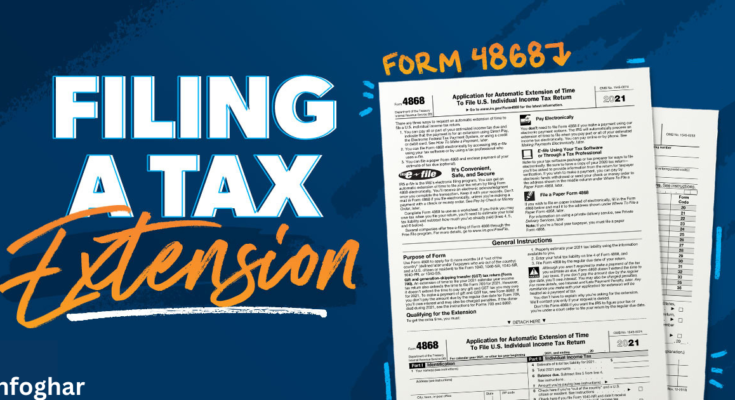Tax Extension Filing: A Step-by-Step Guide
Introduction
Today we will discuss How to file tax extension For many people, tax season may frequently be a cause of stress and concern. However, armed with the proper information and preparation, you may confidently navigate the challenging world of taxes. We will lead you through the process of filing your taxes in this detailed guide, demystifying the terminology and offering helpful advice to make the process go smoothly.
Basic Tax Understanding
Prior to getting into the specifics of paying taxes, it’s crucial to understand the following basic ideas:
What Are Taxes, First?
Taxes are financial obligations placed on people and corporations by the government to pay for infrastructure and public services. It is essential to comprehend the many tax types, including income, property, and sales taxes.
2. Tax Form Types
Different tax circumstances call for different forms, such as the 1040, 1040A, and 1040EZ. Your first step should be to decide which one to employ.
Getting Your Documents Together
3. Gathering Income Records
Gather all of your income-related paperwork, including W-2s, 1099s, and any other records that your company or financial institutions may have provided.
4. Credits and Deductions
Keep track of any possible credits and deductions, including those for charity contributions, student loan interest, and mortgage interest. These can considerably lower your tax obligation.
The Best Filing Status to Choose
5. Head of the household, single, married, or both?
Your tax rates and deductions are impacted by your filing status. Make sure to pick the option that most correctly describes your circumstance.
Process of Filing Taxes
6. Paper vs. Electronic Filing
Examine the benefits and drawbacks of filing your taxes by mail versus electronically. In general, electronic filing is quicker and more secure.
7. Using Software for Tax Preparation
Find out how using tax preparation software can make the process simpler. H&R Block, TaxAct, and TurboTax are a few well-liked alternatives.
8. Obtaining Professional Assistance
Consider consulting a tax expert if your case is complicated or if you have questions regarding the procedure. They are qualified to offer advice.
Income and Deduction Reporting
10. Filling up the Tax Forms
To accurately complete the tax form you’ve chosen, follow a step-by-step manual. Errors may result in delays or audits.
10. Tax Liability Calculation
Recognize how your income, credits, and deductions affect your overall tax obligation. Here is when keeping precise records pays off.
Deadlines and Payment Options
11. Methods of Payment
Learn about many payment options, such as credit card payments, cheques, and electronic transfers. Be mindful of any additional costs.
Deadlines for Filing
Make a note of the April 15th tax filing deadline on your calendar. There are extensions available, but they have restrictions.
Considerations Following Filing
13. Examining your return
Review your tax return carefully after submitting to ensure correctness. Correct any mistakes right away.
Refunds and Outstanding Debts
Recognize what to anticipate if you owe more taxes or are due a refund. In both situations, prompt action is necessary.
Conclusion
Tax preparation need not be a difficult chore. You can effectively handle tax season if you have the correct knowledge and take a methodical approach. Keep in mind that your allies in reducing tax stress are careful planning and attention to detail.
More learn income tax

